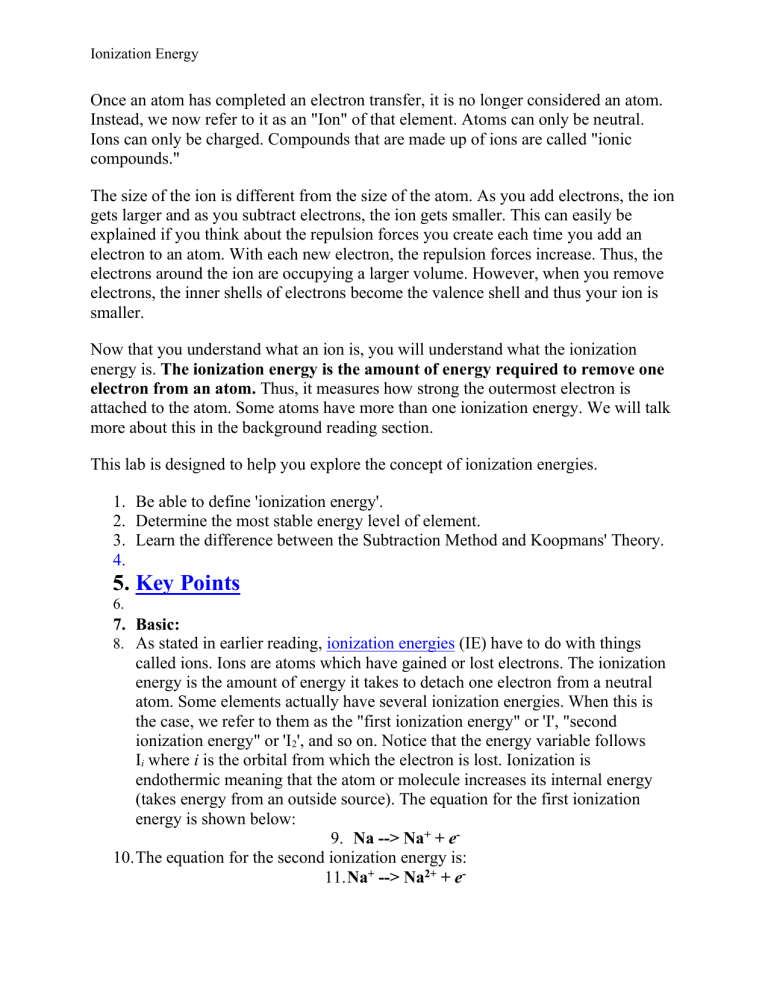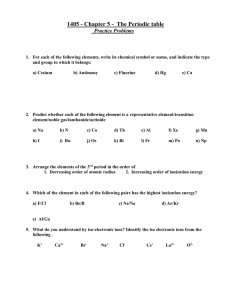
Ionization Energy Once an atom has completed an electron transfer, it is no longer considered an atom. Instead, we now refer to it as an "Ion" of that element. Atoms can only be neutral. Ions can only be charged. Compounds that are made up of ions are called "ionic compounds." The size of the ion is different from the size of the atom. As you add electrons, the ion gets larger and as you subtract electrons, the ion gets smaller. This can easily be explained if you think about the repulsion forces you create each time you add an electron to an atom. With each new electron, the repulsion forces increase. Thus, the electrons around the ion are occupying a larger volume. However, when you remove electrons, the inner shells of electrons become the valence shell and thus your ion is smaller. Now that you understand what an ion is, you will understand what the ionization energy is. The ionization energy is the amount of energy required to remove one electron from an atom. Thus, it measures how strong the outermost electron is attached to the atom. Some atoms have more than one ionization energy. We will talk more about this in the background reading section. This lab is designed to help you explore the concept of ionization energies. 1. Be able to define 'ionization energy'. 2. Determine the most stable energy level of element. 3. Learn the difference between the Subtraction Method and Koopmans' Theory. 4. 5. Key Points 6. 7. Basic: 8. As stated in earlier reading, ionization energies (IE) have to do with things called ions. Ions are atoms which have gained or lost electrons. The ionization energy is the amount of energy it takes to detach one electron from a neutral atom. Some elements actually have several ionization energies. When this is the case, we refer to them as the "first ionization energy" or 'I', "second ionization energy" or 'I2', and so on. Notice that the energy variable follows Ii where i is the orbital from which the electron is lost. Ionization is endothermic meaning that the atom or molecule increases its internal energy (takes energy from an outside source). The equation for the first ionization energy is shown below: 9. Na --> Na+ + e10. The equation for the second ionization energy is: 11. Na+ --> Na2+ + e- Ionization Energy 12. Ionization energy values are typically very high and follow trends throughout the periodic table. The IE increase from bottom to top and left to right in the periodic table. 13. 14. Below is a diagram showing the directions atomic size increase over the periodic table. As you can see, the IE and atomic size increase in opposite directions. This should make sense because as the atom gets smaller, the valence electrons become closer to the nucleus. This means the attractive force holding the electron is stronger and it takes more energy to pull the electron off. 15.




